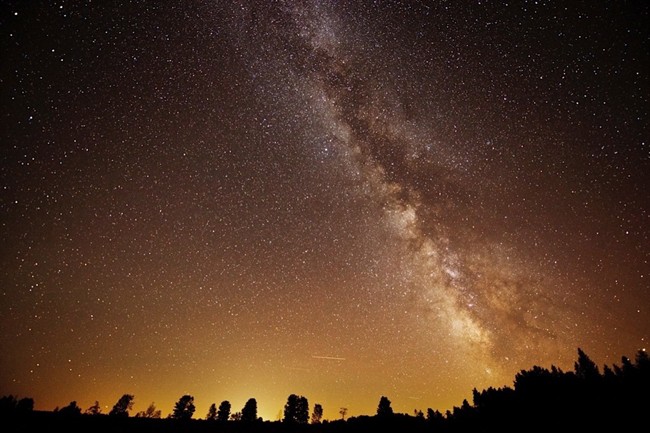Thousands of communications satellites are expected to be launched over the next few years to help bring more connectivity.

However, new research has determined that these “megaconstellations” of satellites may generate a large amount of light pollution in the night sky, according to researchers at the University of Regina (U of R), University of British Columbia and University of Toronto.
Samantha Lawler, an assistant professor of astronomy at the U of R’s Campion College and department of physics, served as a lead researcher on the project.
Lawler said the planned launch of these satellites will have a “devastating” effect on astronomy research and stargazing worldwide.
“We’re not just making up orbits. We’re looking at what orbits companies have said they are going to use for their satellites and how many satellites they want to put up,” shared Lawler. “That gave us 65,000 satellites.”
The research team based their optical brightness and on-sky distribution predictions from companies such as SpaceX‘s Starlink, OneWeb, Kuiper and StarNet/GW.
As part of the project, Lawler said they used a realistic brightness model to predict how many satellites people will be able to see from different locations on the planet.
- 2021 heat dome fuelled by climate change, intensified wildfire risk: study
- B.C. introduces legislation recognizing Haida Gwaii Indigenous title
- Whale experts confident B.C. orca calf will survive, find family if rescue plan succeeds
- Chemical plant shuts down after high benzene levels detected near Ontario First Nation
Unfortunately, the model indicates it will have the largest impact on people near 50 degrees latitude north and south, which includes Canadian cities like Regina, Calgary, Winnipeg and Vancouver.
“For us, the night sky will be filled with hundreds of satellites that will be visible to the naked eye all night long, no matter where you go,” Lawler said.
“They will be visible anywhere in the world within a couple hours of sunrise and sunset, but here at 50 degrees latitude, they will be visible all night during the summertime.”
To put it into perspective, Lawler noted how one in every 15 stars will actually be a satellite floating through the night sky.
“The stars will still be there, but you will be looking at them through this grid of moving satellites.”
As an example, Lawler said Starlink has the largest amount of satellites planned at almost 2,000 and is adding more satellites every two to three weeks.
Another downside to this situation is what’s called Kessler Syndrome.
The syndrome is described as a scenario where the number of objects in low Earth orbit is high enough that collisions between objects creates a cascade effect where each collision generates space debris that increases the likelihood of further collisions.
According to the research team, the debris could render space activities and the use of satellites in specific orbital ranges impractical for long periods of time.
“Earth’s orbit is starting to get crowded. There’s a lot of stuff up there already, yet these companies want to launch about 20 times more satellites than what is currently up there,” she explained.
“We already have had a few collisions between satellites. Once one collision happens, it makes lots of pieces that are now moving in slightly different directions and can crash into more things and create more debris.”
The project has been submitted for publication in the peer-reviewed journal The Astrophysical Journal.
A web application has also been developed by the team to allow people to select a latitude, season and time of night to see how many satellites will be in their night sky and how bright it will be.




Comments